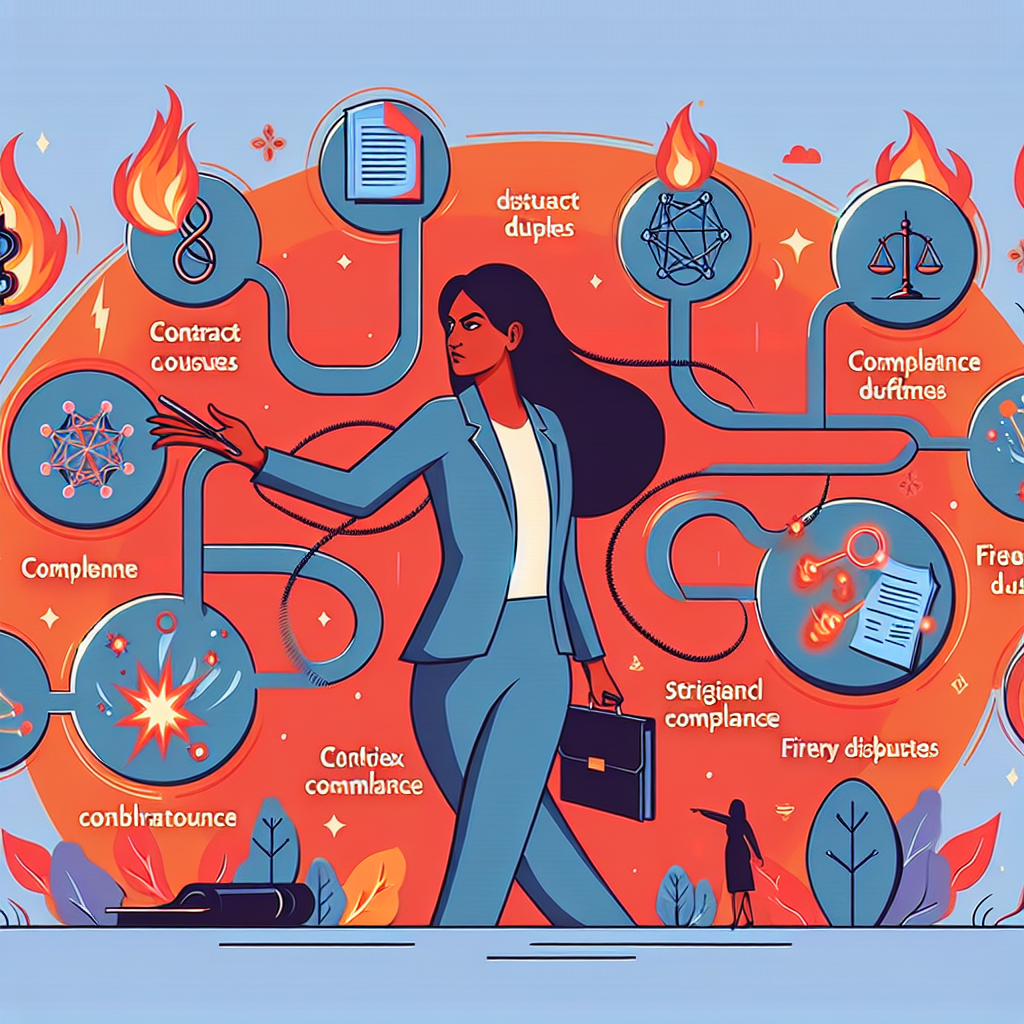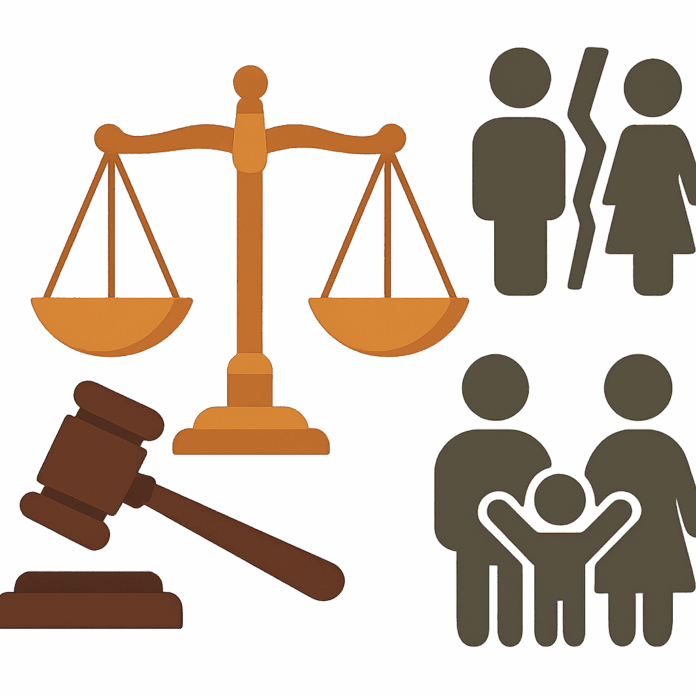Navigating the Business of Law: A Strategic Guide for Success
Introduction
Welcome to the wild and wonderful world of the business of law. If you thought practicing law was all about courtroom drama and legal jargon, think again! The legal profession is not just a series of cases and clients; it’s a thriving ecosystem that requires savvy business strategies to navigate.
In today’s legal landscape, understanding the intricacies of law firm management, legal marketing, and even the latest in legal technology is as crucial as knowing your statutes. With approximately 1.3 million people working as lawyers in the U.S., according to the Bureau of Labor Statistics, competition is fierce, and staying ahead means embracing innovation.
So, what does it mean to truly succeed in the legal services industry? It’s about more than just winning cases; it’s about mastering the art of law office administration, optimizing your approach to client relationships, and understanding the financial mechanics that drive your firm’s profitability.
Did you know that effective talent management can significantly impact your firm’s growth? In fact, firms that prioritize diversity and inclusion see better performance metrics. So, if you’re looking for an edge in this competitive market, focus on building a strong team!
This guide is designed to be your roadmap through the complexities of the business side of practicing law. From strategic insights into law firm economics to practical tips on enhancing client relationship management, we’ll cover everything you need to know to thrive in this ever-evolving field.

Buckle up as we embark on this journey through the business of law where strategy meets practice, and every decision counts towards your firm’s success!
Understanding the Business of Law
The business of law is not just about practicing law; it’s about mastering the art of running a legal enterprise. Think of it as a thrilling game of chess, where every move counts, and strategy is key. So, what does this entail? Let’s dive into the nitty-gritty!
Definition and Scope
The business of law encompasses everything from law firm management to client relations and financial strategies. It’s about understanding how to deliver legal services efficiently while also ensuring profitability and growth. In essence, it’s the intersection where legal expertise meets business acumen.
Importance in the Legal Industry
In today’s competitive landscape, merely being a good attorney isn’t enough. The legal services industry has evolved dramatically, with clients demanding more value for their money. This means that firms need to embrace innovative practices in their operations and marketing strategies to thrive.
Key Insight: According to recent studies, firms that adopt strategic business practices see a notable increase in client satisfaction and retention rates.
The Intersection of Law and Business
This intersection is where magic happens! For instance, consider how technology has revolutionized client relationship management in law firms. By leveraging legal technology tools, firms can enhance their service delivery while optimizing costs think digital transformation but with a lawyer’s flair.
- Legal Operations: Streamlining processes for better efficiency.
- Legal Marketing: Crafting compelling narratives that resonate with potential clients.
- Financial Management: Understanding pricing strategies and alternative fee arrangements that appeal to clients.
A Pitfall to Avoid
A common misconception is that focusing solely on legal work will lead to success. However, neglecting the business side can result in missed opportunities for growth and profitability. Law firm economics dictates that understanding market trends is essential for staying relevant.

If you want your practice to flourish, remember: it’s not just about being an ace at courtroom battles; it’s also about being savvy in the boardroom!
Law Firm Management Essentials
When it comes to the business of law, effective management is the secret sauce that can turn a struggling law practice into a thriving legal business. Think of it as the engine that keeps your law firm running smoothly, ensuring that every cog in the machine is well-oiled and working in harmony. Here are some essential components you can’t afford to overlook:
-
Law Practice Management Strategies
Implementing solid management strategies is crucial for any law firm aiming for growth. Consider adopting project management tools specifically designed for legal workflows. These can help streamline tasks, enhance collaboration, and improve overall efficiency.
-
Legal Office Administration Best Practices
Office administration might sound mundane, but it’s where the magic happens! Focus on creating a welcoming office environment and establish clear protocols for everything from client intake to document handling. This not only boosts morale but also enhances client satisfaction.
-
Effective Legal Operations Frameworks
In the rapidly evolving legal services industry, having a robust operations framework is non-negotiable. This includes everything from managing workflows to ensuring compliance with regulatory requirements. Think of it as your firm’s playbook without it, you’re just winging it!
Key Takeaway: A well-managed law firm is not just about keeping the lights on; it’s about creating systems that foster growth and sustainability in the competitive legal market.

But wait, there’s more! The business of practicing law isn’t just about internal processes; it’s also about how you engage with clients and market your services. Remember, in today’s digital age, an attractive online presence coupled with effective client relationship management can set you apart from your competitors.
According to recent studies, firms that invest in legal technology see a 30% increase in operational efficiency.
This means embracing digital transformation isn’t optional it’s essential for survival in the legal profession! So whether you’re considering new billing practices or exploring alternative fee arrangements, keep an eye on how these innovations can bolster your firm’s profitability.
If you’re still managing your practice with outdated methods, now’s the time to pivot. The future of law firm economics hinges on adaptability and foresight. Equip yourself with competitive intelligence tools that help you stay ahead of market trends because let’s face it: no one wants to be left behind!
Legal Marketing and Business Development
In the ever-evolving business of law, legal marketing and business development are no longer just afterthoughts; they are essential components of a successful law firm strategy. Think of it as the difference between being a well-kept secret and being the talk of the town who wouldn’t want to be in the latter group?
Creating a Law Firm Strategy for Growth
First up, let’s talk strategy. A robust law firm growth strategy is like a good playlist it needs to have the right mix of hits (marketing tactics) and deep cuts (niche services). Here’s how to curate your own:
- Identify Your Niche: What sets you apart in the legal services industry? Whether it’s corporate law or personal injury, find your sweet spot.
- Build Your Brand: Consistent branding across all platforms can create a strong identity. Think of it as your firm’s personality make sure it resonates!
- Engage on Social Media: Platforms like LinkedIn can be goldmines for networking. Share insights, engage with potential clients, and establish thought leadership.
Digital Transformation in Legal Services
The digital age has transformed how we operate in the legal profession. Embracing technology isn’t just about having snazzy software; it’s about enhancing client experience and office efficiency.
Key Takeaway: Invest in legal technology solutions that streamline operations think case management systems and secure client portals. This not only boosts productivity but also enhances attorney-client relations management.
Client Relationship Management in Law Firms
Your clients are your best advocates, so nurturing those relationships is paramount. Consider implementing a client relationship management (CRM) system tailored for law firms. This can help track interactions, follow-ups, and even billing practices.
The legal market trends indicate that firms using CRM systems report higher client satisfaction rates.
A few strategies for effective CRM include:
- Cater to Client Needs: Regular check-ins can go a long way show clients you care beyond just billable hours.
- Simplify Communication: Use technology to maintain open lines with clients through emails, texts, or even chatbots for FAQs.
- Create Feedback Loops: Post-service surveys can provide invaluable insights into what you’re doing right and where there’s room for improvement.
If you’re feeling overwhelmed by all this information, don’t worry! The key is to start small. Focus on one area at a time, whether it’s enhancing your digital presence or improving client interactions. Remember, even small changes can lead to significant impacts on your firm’s growth!
Financial Aspects of Running a Law Firm
When it comes to the business of law, understanding the financial landscape is as crucial as knowing the law itself. A law firm is not just a place where legal minds meet; it’s a business that requires savvy financial management to thrive.
Legal Finance Fundamentals
The first step in mastering the financial aspects of running a law firm is grasping the basics of legal finance. This includes:
- Cash Flow Management: Keeping track of incoming and outgoing cash is vital. A common mistake many firms make is neglecting cash flow projections, which can lead to unexpected shortages.
- Budgeting: Establishing a clear budget helps in monitoring expenses and ensuring profitability. Think of it as your firm’s financial GPS without it, you’re likely to get lost!
- Financial Reporting: Regularly reviewing financial statements such as profit and loss statements, balance sheets, and cash flow statements provides insight into your firm’s economic health.
Law Firm Profitability Metrics
Understanding profitability metrics is essential for any legal business aiming for growth. Here are some key metrics to keep an eye on:
- Realization Rate: This measures how much of the billed time is actually collected from clients. A low realization rate can signal issues with client satisfaction or billing practices.
- Utilization Rate: This indicates how much time attorneys spend on billable work versus non-billable tasks. High utilization rates often correlate with higher profitability.
- Profit Margin: Calculating profit margins helps assess overall financial health and identify areas for improvement in law firm economics.
Key Takeaway: Regularly tracking these metrics can help you make informed decisions about your law firm strategy, enhancing both efficiency and profitability in the competitive legal services industry.
Pricing Strategies for Lawyers and Alternative Fee Arrangements
The traditional hourly billing model is evolving, and many firms are exploring alternative fee arrangements (AFAs). Here’s why you should consider them:
- Client Preferences: More clients are seeking predictable costs, making AFAs attractive options that can enhance attorney-client relations management.
- Differentiation in Legal Marketing: Offering unique pricing strategies can set your firm apart in a crowded market think of it as your secret sauce!
- Simplified Billing Practices: AFAs can streamline billing processes, reducing administrative burdens and improving overall law office efficiency.

Avoid common pitfalls like underestimating costs or overpromising on deliverables when implementing these pricing strategies. Remember that transparency with clients fosters trust a key ingredient in successful attorney-client relations management.
Navigating the financial aspects of running a law firm may seem daunting at first, but with careful planning and strategic insight into legal finance practices, you can ensure your practice not only survives but thrives in this ever-evolving legal market landscape.
The Role of Technology in the Legal Sector
In the ever-evolving business of law, technology is not just a shiny new toy; it’s the engine driving efficiency, innovation, and growth. As we delve into the legal services industry, let’s explore how tech is reshaping the landscape.
Legal Technology Innovations and Trends
The rise of legal technology has transformed traditional law practice management. Tools like AI-powered document review software and case management systems have accelerated workflows, leaving attorneys more time for what they do best practicing law. Imagine having a virtual assistant that can sift through thousands of documents in minutes. That’s not science fiction; that’s today’s reality!
According to a recent study, firms utilizing legal technology reported a 30% increase in productivity and a significant boost in client satisfaction.
Diversity and Inclusion through Legal Tech Solutions
Technology also plays a pivotal role in enhancing diversity and inclusion within the legal profession. Platforms that promote remote work enable firms to tap into a broader talent pool. This means more opportunities for underrepresented groups who might have been sidelined by traditional hiring practices. Think of it as opening the doors to a wider range of voices and perspectives essential ingredients for innovation.
Competitive Intelligence Tools for Law Firms
In an increasingly competitive market, staying ahead is crucial. Enter competitive intelligence tools! These nifty gadgets allow law firms to analyze market trends, track competitor strategies, and refine their own law firm strategy accordingly. It’s like having a crystal ball that helps you see where the legal market is headed invaluable for making informed decisions about mergers and acquisitions or pricing strategies for lawyers.
However, with great power comes great responsibility (thanks, Uncle Ben!). Law firms must ensure they are using these technologies ethically while maintaining client confidentiality. A solid grasp on regulatory compliance is non-negotiable when integrating new tech solutions into your practice.
“The integration of technology in law firms not only streamlines operations but also enhances client relationships through improved communication and service delivery.” – Legal Tech Insights Report 2025
As we navigate this digital transformation in legal services, remember: embracing technology isn’t just about keeping up; it’s about leading the charge towards greater efficiency and better client outcomes.
Takeaway: Embracing legal technology isn’t optional anymore it’s essential for survival and success in the business of law. Start exploring these innovations today to elevate your practice!
Talent Management and Succession Planning in Law Firms
In the ever-evolving business of law, talent management and succession planning are not just buzzwords; they are critical components of a law firm’s long-term strategy. Think of it as the legal equivalent of a well-orchestrated heist movie everyone has to know their role, and you must have a plan for when the lead actor (or attorney) exits stage left.
Talent Acquisition Strategies for Attorneys
The first step in this thrilling adventure is attracting the right talent. In a competitive legal market, firms need to implement innovative recruitment strategies that go beyond traditional methods. Here are some tips:
- Leverage Legal Technology: Utilize AI-driven recruitment tools to identify potential candidates who fit your firm’s culture and needs.
- Diversity Initiatives: Develop programs aimed at attracting diverse talent, ensuring a wide range of perspectives in your practice.
- Internship Programs: Forge relationships with law schools to create internship opportunities that can serve as a talent pipeline.
Sustaining Leadership within Legal Practices
Once you’ve got your dream team in place, it’s crucial to foster an environment that promotes leadership development. This isn’t just about grooming future partners; it’s about creating a culture where everyone can thrive:
- Mentorship Programs: Pair seasoned attorneys with junior lawyers to share knowledge and skills.
- Leadership Training: Invest in training programs that equip attorneys with essential management skills.
- Feedback Mechanisms: Implement regular performance reviews that focus on growth and development rather than just evaluation.
Succession Planning Best Practices for Attorneys and Firms
No one likes to think about the day when their star attorney decides to retire or move on, but having a solid succession plan is vital for maintaining continuity and stability. Here are some best practices:
- Create a Succession Plan Early: Don’t wait until someone is ready to leave. Start planning at least five years in advance.
- Select Potential Leaders Early: Identify and groom future leaders within your firm who can step into key roles when necessary.
- Document Knowledge: Encourage knowledge sharing among attorneys, ensuring critical information isn’t lost when someone departs.
The legal profession is undergoing significant changes due to technological advancements and shifting client expectations. Firms that prioritize talent management and succession planning will not only enhance their operational efficiency but also drive long-term growth in the competitive landscape of the legal services industry.
Navigating Regulatory Compliance and Ethics in Legal Practice
- <
li >Understanding Regulatory Compliance Requirements
< li >Ethical Considerations in the Business of Practicing Law

























